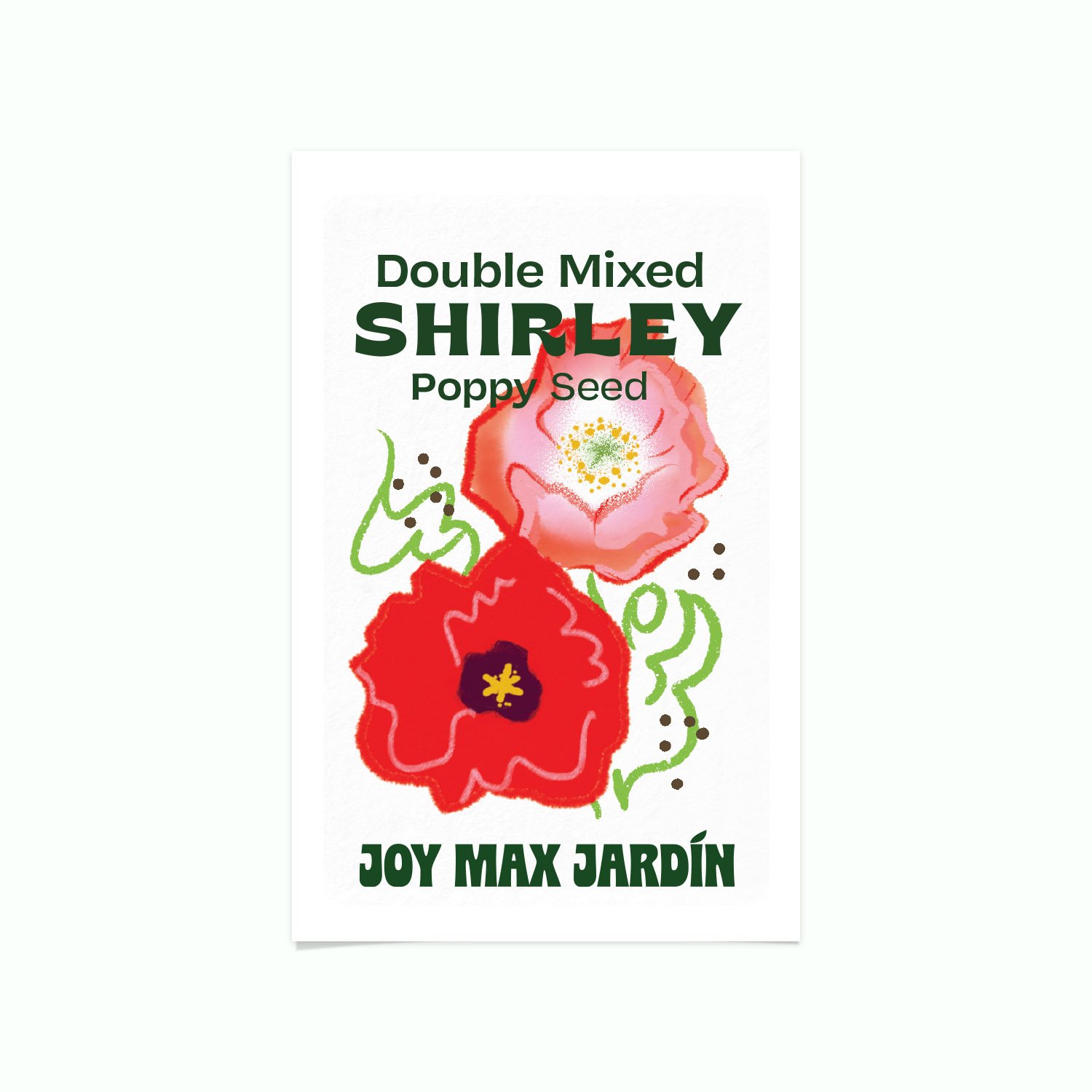Double Mixed Shirley Poppy
Papaver rhoeas • Open-pollinated
A crab spider hopes to ambush a bee in the poppy flowers.
Nothing says springtime like poppies. These Shirley poppies are dramatic without being difficult. In every shade of Valentine, they will romance you and all the pollinators in your life.
JOY MAX SCALE ✦✦✦✦✧
✦ Pink tissue-paper petals add delicate flair to bouquets
✦ Easy to grow; Thrives in all regions of the country
✦ Seeds are super easy to collect for baking or to save to plant next year.
✦ Shirley poppies have almost no foliage, making them super attractive in the garden and beautiful in arrangements.
✧ It may take up to 30 days for the seeds to sprout, and you need to keep the surface area moist until then for best gemination.
Basic Growing Information
The seeds for the Red Poppy are very small, and only need to be planted as deep as they are wide. Often success can be found by scattering the seeds on top of loose garden soil and watering them in.
Seeds should be direct sown as poppies do not transplant well. Scatter seeds and rake in lightly. When 2” tall, thin to 1 every 8”. In climates with mild winters, sow seeds in the fall for spring blooms. Keep seeds and seedlings moist but not water-logged until established, and reduce watering. While poppies are drought tolerant in general, an occasional soaking can boost blooming.
The seeds you collect from this first time growing poppies will keep you in seeds for years to come.
PLANT HEIGHT: 12-30” PLANT WIDTH: 12” SEED SPACING: 12” SEED DEPTH: Surface IDEAL TEMP: 75º Germination: 10-30 days DAYS TO MATURITY: 60-90 SOIL: Poor to average, well-drained LIGHT: Full Sun / Part shade
Tips for Growing Poppies
Only direct sow. Transplanting disturbs their tap roots. If you want to try to move overcrowded seedlings, do it only when they are very small and try to move a chunk of soil with them.
These poppies will do well in small plantings, but to really blow people away, scatter seeds over a large area in the fall. Come spring, the colors will blanket the field.
In a field planting, it doesn’t much matter, but in your yard you will need to thin the seedlings out to at 12-18” apart so they can reach their full potential.
Poppies bloom like crazy under cool growing conditions. They are known for self-sowing, sometimes with abandon, and you may find seedlings popping up everywhere. They are not invasive and the they are easy to pull up if they land in unwanted places.
They will continue to bloom in the evenings of even the hottest days if you water and mulch them.
Don’t over-fertilize or they won’t bloom, they’ll just grow foliage.
If you sear the cut end right away with a match, these poppies will last quite a long time as cut flowers.
Seed Saving
To harvest seed pods, cut when the pods turn light brown and dry out for 1-2 weeks before poking a hole to pour them out and store in a jar for up to two years. Use for baking or save to plant next year.
Companion Planting
Scatter with other wildflower seeds that also require cold stratification (over-wintering) like bluebonnets for a wild meadow look.





